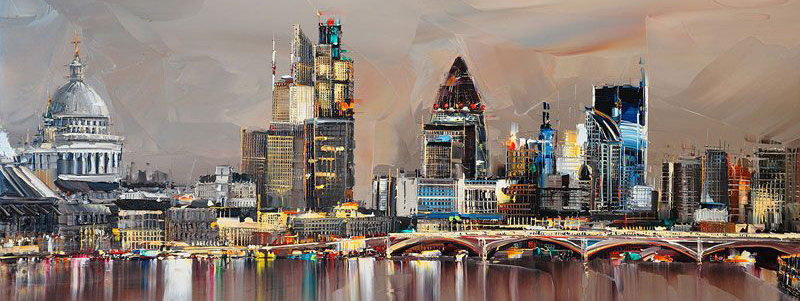Virginia Woolf once stated that she had began to see London through different eyes, after having read the novel Moll Flanders by Defoe, written two thousand years earlier. The function of a book is in fact that of encouraging the reader to observe the world around him or her with a new level of awareness and attention, and to go beyond the superficial aspect of things. A book can guide the gaze of those who read it towards more particular nuances of reality and it can also offer a different perspective when looking at the surrounding environment. 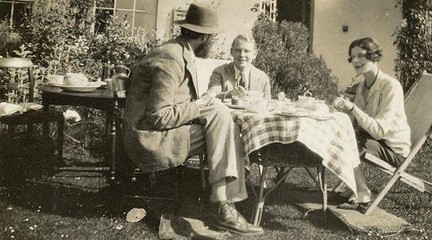 An instance of this are Virginia Woolf's works, which describe the city of London like few others manage to do. She founded the Bloomsbury Group, a gathering of brilliant and eclectic intellectuals who would meet at her house, at 29, Fitzroy Square. Members of the group included the economist Keynes, the writer and literary critic Strachey, the writer Foster, the painter Grant, and the art critic Roger Fry. For example, in telling us about her day at the Visitor's Gallery at the House of Commons, Woolf speaks with irony about politicians, as snooty as if they were already statues ready to be placed alongside those of Gladstone, Pitt and Palmerston. The writer also pondered upon which type of marble would be the most apt to make sculptures of them.
An instance of this are Virginia Woolf's works, which describe the city of London like few others manage to do. She founded the Bloomsbury Group, a gathering of brilliant and eclectic intellectuals who would meet at her house, at 29, Fitzroy Square. Members of the group included the economist Keynes, the writer and literary critic Strachey, the writer Foster, the painter Grant, and the art critic Roger Fry. For example, in telling us about her day at the Visitor's Gallery at the House of Commons, Woolf speaks with irony about politicians, as snooty as if they were already statues ready to be placed alongside those of Gladstone, Pitt and Palmerston. The writer also pondered upon which type of marble would be the most apt to make sculptures of them.
 An instance of this are Virginia Woolf's works, which describe the city of London like few others manage to do. She founded the Bloomsbury Group, a gathering of brilliant and eclectic intellectuals who would meet at her house, at 29, Fitzroy Square. Members of the group included the economist Keynes, the writer and literary critic Strachey, the writer Foster, the painter Grant, and the art critic Roger Fry. For example, in telling us about her day at the Visitor's Gallery at the House of Commons, Woolf speaks with irony about politicians, as snooty as if they were already statues ready to be placed alongside those of Gladstone, Pitt and Palmerston. The writer also pondered upon which type of marble would be the most apt to make sculptures of them.
An instance of this are Virginia Woolf's works, which describe the city of London like few others manage to do. She founded the Bloomsbury Group, a gathering of brilliant and eclectic intellectuals who would meet at her house, at 29, Fitzroy Square. Members of the group included the economist Keynes, the writer and literary critic Strachey, the writer Foster, the painter Grant, and the art critic Roger Fry. For example, in telling us about her day at the Visitor's Gallery at the House of Commons, Woolf speaks with irony about politicians, as snooty as if they were already statues ready to be placed alongside those of Gladstone, Pitt and Palmerston. The writer also pondered upon which type of marble would be the most apt to make sculptures of them. London, like all vast cities, is the result of the stratification of millennia, with layer upon layer of different languages superimposed over each other; this has shaped the multilingual richness of it. It is a patchwork of cultures, an urban blend evident also in the diversity of food and cuisine on offer. Amongst the traits of the city which mostly grasped the fantasy of writers is the estranging effect of some of its neighbourhoods, especially at night, when one has the impression of floating on a black blanket pierced by thousands of lights.
At a first glance, London may seem less suitable than Paris, as far as aimless wandering is concerned. There are few of the wide tree-filled boulevards so typical of the French capital, nor are there the relaxed coffee shops in which the observing saunterer can spend hours on end. 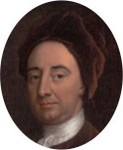 However, this is but a fleeting and superficial impression.
However, this is but a fleeting and superficial impression.
 However, this is but a fleeting and superficial impression.
However, this is but a fleeting and superficial impression. 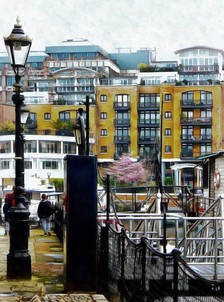 In fact, as early as the Eighteenth Century, the poet John Gay dedicated a short poem to the city, going by the title Trivia or The Art of Walking the Streets of London. Incidentally, Gay was also the author of a city guide of sorts, a booklet named Beggar’s Opera, within which he launches a desperate plea regarding the need to save the identity of London from the influence of foreigners, in particular with regards to the Italian melodrama.
In fact, as early as the Eighteenth Century, the poet John Gay dedicated a short poem to the city, going by the title Trivia or The Art of Walking the Streets of London. Incidentally, Gay was also the author of a city guide of sorts, a booklet named Beggar’s Opera, within which he launches a desperate plea regarding the need to save the identity of London from the influence of foreigners, in particular with regards to the Italian melodrama. In time, many areas of the capital have been overhauled and improved, yet at the same time they have thus been rendered more uniform and sterile. No longer are there tamed and trained beasts on the streets, as was so in Shakespeare's days, nor do the taverns project the singing of coarse voices as they once did. The bizarre trading items which marked those times are also gone, but along with all this, many peculiar and picturesque corners have also disappeared.
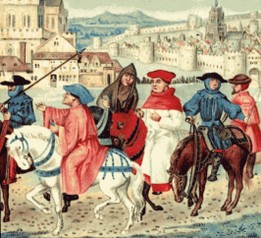 London is a literary city due to the sheer amount of places where writers have chosen to set their novels and poets have dedicated their verses to, but also due to the number of authors who were born there or who lived there, from the Fourteenth Century onwards.
London is a literary city due to the sheer amount of places where writers have chosen to set their novels and poets have dedicated their verses to, but also due to the number of authors who were born there or who lived there, from the Fourteenth Century onwards. 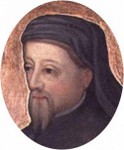 As well as novelists, London was also covered by many chroniclers, such as Jean Froissart. Geoffrey Chaucer, the author of The Canterbury Tales, was born in 1343 in Thames Street, near where the Cutty Sark is docked today. Chaucer chose Southwark as the setting for the starting point of the pilgrims in their journey towards Canterbury, which they would head for, in order to visit the sanctuary of Saint Thomas Becket.
As well as novelists, London was also covered by many chroniclers, such as Jean Froissart. Geoffrey Chaucer, the author of The Canterbury Tales, was born in 1343 in Thames Street, near where the Cutty Sark is docked today. Chaucer chose Southwark as the setting for the starting point of the pilgrims in their journey towards Canterbury, which they would head for, in order to visit the sanctuary of Saint Thomas Becket. 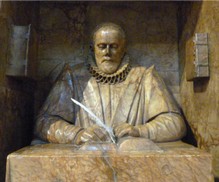 The historian John Stow, born in the London neighbourhood of Cornhill in 1525, delivered his testimony on the Sixteenth Century. His most renowned work is Survey of London, published in 1598. The book manages to avoid merely being a cold, arid report, and instead succeeds in telling a witty story, rich with anecdotes, with a detailed description of the buildings, the social conditions, and the lifestyle during the reign of Elizabeth I. On the outer wall of the church of St Andrew Undershaft, stands a monument dedicated to Stow. Also during the Sixteenth Century, Henry Machyn wrote his diary of London.
The historian John Stow, born in the London neighbourhood of Cornhill in 1525, delivered his testimony on the Sixteenth Century. His most renowned work is Survey of London, published in 1598. The book manages to avoid merely being a cold, arid report, and instead succeeds in telling a witty story, rich with anecdotes, with a detailed description of the buildings, the social conditions, and the lifestyle during the reign of Elizabeth I. On the outer wall of the church of St Andrew Undershaft, stands a monument dedicated to Stow. Also during the Sixteenth Century, Henry Machyn wrote his diary of London.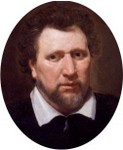 Ben Jonson was born in 1574 near the Strand. When his father died, he was forced to abandon Westminster School to find a job as a builder. He would keep himself entertained on the job by astonishing his workmates and passers-by with citations from the classics and the recital of lines from poems.
Ben Jonson was born in 1574 near the Strand. When his father died, he was forced to abandon Westminster School to find a job as a builder. He would keep himself entertained on the job by astonishing his workmates and passers-by with citations from the classics and the recital of lines from poems.  William Shakespeare was born at Stratford-upon-Avon and moved to London when he was very young. He lived for quite some time in an apartment for single gentlemen.
William Shakespeare was born at Stratford-upon-Avon and moved to London when he was very young. He lived for quite some time in an apartment for single gentlemen. 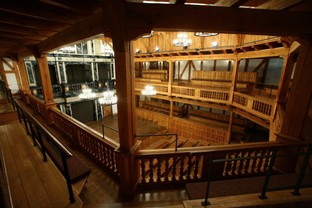 The little remaining evidence on his life includes an archive document proving his purchase, in 1613, of a house in the area of the Blackfriars theatre, where there is a passage known as Playhouse Alley. Shakespeare chose the city of the Doges as the setting for his work, The Merchant of Venice, however it is the privileges of the City of London which he was actually targeting through his fictional story. In Richard III, instead, he transforms the Mayor and the Old Counselor into clumsy, awkward characters to great comic effect.
The little remaining evidence on his life includes an archive document proving his purchase, in 1613, of a house in the area of the Blackfriars theatre, where there is a passage known as Playhouse Alley. Shakespeare chose the city of the Doges as the setting for his work, The Merchant of Venice, however it is the privileges of the City of London which he was actually targeting through his fictional story. In Richard III, instead, he transforms the Mayor and the Old Counselor into clumsy, awkward characters to great comic effect.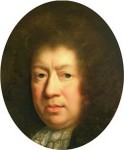 Samuel Pepys was born in 1633 in Salisbury Court, a cross street of Fleet Street. He later lived at 12, Buckingham Street. Pepys was a circumstantial recorder of the chronicles of the capital, and to describe the latter he used the style of literary realism.
Samuel Pepys was born in 1633 in Salisbury Court, a cross street of Fleet Street. He later lived at 12, Buckingham Street. Pepys was a circumstantial recorder of the chronicles of the capital, and to describe the latter he used the style of literary realism. 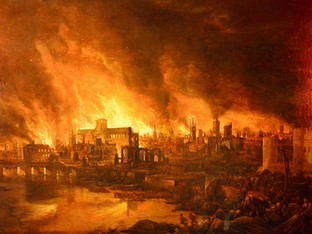 He worked as Chief Secretary to the Admiralty, and his diaries pushed London into the limelight of worldwide focus. Amongst his descriptions is the dramatic portrayal of the Great Fire of 1666, of which he witnessed the development on the night of September 2nd, as he gazed out of his room window overlooking Seething Lane. Because of the fact that the flames had given him the impression of being distant and not in the least bit dangerous, he had decided to go back to sleep. Twenty-four hours later, his house had been surrounded by flames, and he was forced to leave the premises in a hurry. The fire razed roughly fifteen thousand homes, eighty-seven churches, and fifty guild headquarters.
He worked as Chief Secretary to the Admiralty, and his diaries pushed London into the limelight of worldwide focus. Amongst his descriptions is the dramatic portrayal of the Great Fire of 1666, of which he witnessed the development on the night of September 2nd, as he gazed out of his room window overlooking Seething Lane. Because of the fact that the flames had given him the impression of being distant and not in the least bit dangerous, he had decided to go back to sleep. Twenty-four hours later, his house had been surrounded by flames, and he was forced to leave the premises in a hurry. The fire razed roughly fifteen thousand homes, eighty-seven churches, and fifty guild headquarters. 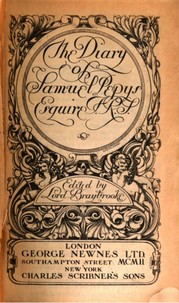 Pepys' pages also tell us of enormous climatic variations that took place during those years. "During February, 1665," he writes, "birds in flight would fall to the ground, stone dead and frozen". He also reported the events of The Plague, which between 1664 and 1665 harvested about 100,000 victims, and forced thousands of Londoners to resort to living on barges. In his Diaries, Pepys also spoke of happier things, such as a fountain with excellent wine gushing from it, on occasion of the Duke of York's birthday. The chronicler also tastefully described the Southwark Fair, brimming with prostitutes and pickpockets, who would leave a trail of heaps of rubbish behind them, as well as the open-air concerts of Vauxhall Gardens. Pepys gave a mocking account of the death of his coachman, which took place on the job: the latter had gradually loosened his grip on the horse's reins, until he had finally ceased to move altogether.
Pepys' pages also tell us of enormous climatic variations that took place during those years. "During February, 1665," he writes, "birds in flight would fall to the ground, stone dead and frozen". He also reported the events of The Plague, which between 1664 and 1665 harvested about 100,000 victims, and forced thousands of Londoners to resort to living on barges. In his Diaries, Pepys also spoke of happier things, such as a fountain with excellent wine gushing from it, on occasion of the Duke of York's birthday. The chronicler also tastefully described the Southwark Fair, brimming with prostitutes and pickpockets, who would leave a trail of heaps of rubbish behind them, as well as the open-air concerts of Vauxhall Gardens. Pepys gave a mocking account of the death of his coachman, which took place on the job: the latter had gradually loosened his grip on the horse's reins, until he had finally ceased to move altogether.
John Evelyn is another chronicler who spoke of the events of everyday life, of street shows, and also of an Italian tightrope walker who would perform with dancing monkeys, whilst holding baskets full of eggs on his head and burning candles in his hands.
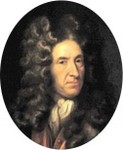 Daniel Defoe was born in 1660 in Cripplegate, in the heart of the City.
Daniel Defoe was born in 1660 in Cripplegate, in the heart of the City. In his diaries on the Plague's outbreak, called Journal of the Plague Year, he described the catastrophic moments of the terrible scourge, and the disastrous events of the Great Fire. Defoe's house, along with two others, were the only ones left standing in the neighbourhood.  Samuel Johnson, nicknamed "the Sage of Fleet Street", took house in London in 1745. In accordance with his statement “When a man is tired of London, he is tired of life”, he almost never strayed far from the capital.
Samuel Johnson, nicknamed "the Sage of Fleet Street", took house in London in 1745. In accordance with his statement “When a man is tired of London, he is tired of life”, he almost never strayed far from the capital.
 Samuel Johnson, nicknamed "the Sage of Fleet Street", took house in London in 1745. In accordance with his statement “When a man is tired of London, he is tired of life”, he almost never strayed far from the capital.
Samuel Johnson, nicknamed "the Sage of Fleet Street", took house in London in 1745. In accordance with his statement “When a man is tired of London, he is tired of life”, he almost never strayed far from the capital. He had moved to London from Lichfield in order to work as a journalist. His house was in Gough Street, which is now a museum, and there he compiled his famous Dictionary. 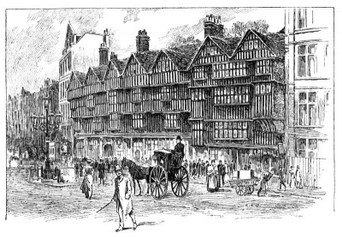 On those occasions when he would leave London, it would be to pay a visit to the Staple Inn, located in Inner Temple Lane, or to go to the nearby church of St Clement Danes, on the Strand. On the church wall, there is an inscription in memory of his extremely regular attendance to mass: “From this bench, near the pillar, the renowned doctor Samuel Johnson would follow the religious service." In the poem London, Johnson is somewhat critical towards the city, although he was always a great admirer of it.
On those occasions when he would leave London, it would be to pay a visit to the Staple Inn, located in Inner Temple Lane, or to go to the nearby church of St Clement Danes, on the Strand. On the church wall, there is an inscription in memory of his extremely regular attendance to mass: “From this bench, near the pillar, the renowned doctor Samuel Johnson would follow the religious service." In the poem London, Johnson is somewhat critical towards the city, although he was always a great admirer of it.
 On those occasions when he would leave London, it would be to pay a visit to the Staple Inn, located in Inner Temple Lane, or to go to the nearby church of St Clement Danes, on the Strand. On the church wall, there is an inscription in memory of his extremely regular attendance to mass: “From this bench, near the pillar, the renowned doctor Samuel Johnson would follow the religious service." In the poem London, Johnson is somewhat critical towards the city, although he was always a great admirer of it.
On those occasions when he would leave London, it would be to pay a visit to the Staple Inn, located in Inner Temple Lane, or to go to the nearby church of St Clement Danes, on the Strand. On the church wall, there is an inscription in memory of his extremely regular attendance to mass: “From this bench, near the pillar, the renowned doctor Samuel Johnson would follow the religious service." In the poem London, Johnson is somewhat critical towards the city, although he was always a great admirer of it. The great writers of the Nineteenth Century - 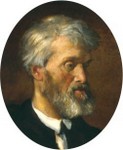 Thomas Carlyle was born in 1795 in Ecclefechan, Scotland, but lived his whole life in London. He was a historian, an essayist, and a philosopher. His writing reflects the disillusionment , the tensions and the social conflict created by the Industrial Revolution, and issues warnings concerning social upheaval. To a mechanical society, Carlyle counterposes a spiritual one, imbued with moral values. He introduces the concept of the hero, and in his later works takes positions which are in fact quite racist. His biography on Frederick the Great was one of Hitler's favourite books, and this linked his work to ideas of intolerance, thus obscuring his fame.
Thomas Carlyle was born in 1795 in Ecclefechan, Scotland, but lived his whole life in London. He was a historian, an essayist, and a philosopher. His writing reflects the disillusionment , the tensions and the social conflict created by the Industrial Revolution, and issues warnings concerning social upheaval. To a mechanical society, Carlyle counterposes a spiritual one, imbued with moral values. He introduces the concept of the hero, and in his later works takes positions which are in fact quite racist. His biography on Frederick the Great was one of Hitler's favourite books, and this linked his work to ideas of intolerance, thus obscuring his fame.
 Thomas Carlyle was born in 1795 in Ecclefechan, Scotland, but lived his whole life in London. He was a historian, an essayist, and a philosopher. His writing reflects the disillusionment , the tensions and the social conflict created by the Industrial Revolution, and issues warnings concerning social upheaval. To a mechanical society, Carlyle counterposes a spiritual one, imbued with moral values. He introduces the concept of the hero, and in his later works takes positions which are in fact quite racist. His biography on Frederick the Great was one of Hitler's favourite books, and this linked his work to ideas of intolerance, thus obscuring his fame.
Thomas Carlyle was born in 1795 in Ecclefechan, Scotland, but lived his whole life in London. He was a historian, an essayist, and a philosopher. His writing reflects the disillusionment , the tensions and the social conflict created by the Industrial Revolution, and issues warnings concerning social upheaval. To a mechanical society, Carlyle counterposes a spiritual one, imbued with moral values. He introduces the concept of the hero, and in his later works takes positions which are in fact quite racist. His biography on Frederick the Great was one of Hitler's favourite books, and this linked his work to ideas of intolerance, thus obscuring his fame. 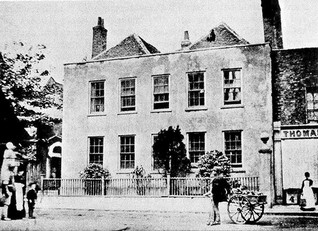
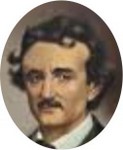 Edgar Allan Poe was born in Boston in 1809 with a couple of actors for parents, who both died when he was just two years old. He was adopted by a rich English merchant from Richmond, after which Poe lived in London until the age of eleven, attending an institute in Stoke Newington, which he later described in his book William Wilson: “The school was hosted in an extremely old house in a mysterious village, rich with fantastic paths to follow, upon which fell the shadows of the elms, which had been there since time immemorial..." Poe too, much like Stevenson, described the light of the gas lamps as being incapable of piercing the darkness, a chimerical light which also caused all those who passed beneath it to seem somewhat unreal. The main character of The Man of the Crowd, decides one autumn evening to follow an elderly man, who is behaving very strangely, for a night and a day. In the end, exhausted, he faces the old man, but the latter refuses to look him in the face or speak to him, and simply walks off, disappearing into the distance.
Edgar Allan Poe was born in Boston in 1809 with a couple of actors for parents, who both died when he was just two years old. He was adopted by a rich English merchant from Richmond, after which Poe lived in London until the age of eleven, attending an institute in Stoke Newington, which he later described in his book William Wilson: “The school was hosted in an extremely old house in a mysterious village, rich with fantastic paths to follow, upon which fell the shadows of the elms, which had been there since time immemorial..." Poe too, much like Stevenson, described the light of the gas lamps as being incapable of piercing the darkness, a chimerical light which also caused all those who passed beneath it to seem somewhat unreal. The main character of The Man of the Crowd, decides one autumn evening to follow an elderly man, who is behaving very strangely, for a night and a day. In the end, exhausted, he faces the old man, but the latter refuses to look him in the face or speak to him, and simply walks off, disappearing into the distance. 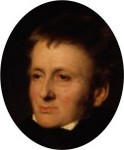 Thomas De Quincey was born in Manchester, but reached London when he was very young, in 1802. He had ended up struggling to make ends meet and had resorted to opium in order to get some relief from strong physical pains and to gain some consolation against London, defined by him as exasperating and a generator of folly. One of the streets he hated most was Oxford Street.
Thomas De Quincey was born in Manchester, but reached London when he was very young, in 1802. He had ended up struggling to make ends meet and had resorted to opium in order to get some relief from strong physical pains and to gain some consolation against London, defined by him as exasperating and a generator of folly. One of the streets he hated most was Oxford Street. When he returned to London, he went to live at 36, Tavistock Street, in Covent Garden. The apartment was located, and still is, just above a pub with a blue signpost. In the study overlooking the street, he wrote his most famous book, Confessions of an English Opium Eater, where he described his experience with drugs. The book influenced Charles Baudelaire and Edgar Allan Poe, amongst others.
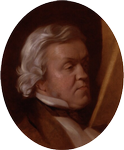 William Thackeray was born in 1811 in Calcutta, which at the time was the capital of the British empire. At the age of five, he lost his father. His mother sent him back to England so that he could attend his schooling, whilst she remained in India. After his studies, Thackeray became a journalist and writer. His best-known work is Vanity Fair, where he drops irony on the human ineptitude of the characters. Other works of his, are Pendennis, written in 1846 at the address of 16, Young Street, and The Virginians, written in 1853 at 36, Onslow Square. In the historical novel History of Henry Esmond, the protagonist, a colonel serving Queen Anne, recounts his life story. At Thackeray's funeral, after his death at the age of fifty-two, around seven thousand people were present, which goes to show just how appreciated the irony and satire present in his work was, for many people, who wished to pay him homage one last time. A bust representing him, sculpted by the baron Carlo Marochetti, can be found in Westminster abbey. His house, which the writer had built in 1862, one year before his death, at 2, Palace Gardens, is now the headquarters of the Israeli embassy. Instead, his previous home in Tunbridge Wells hosts a homonymous restaurant.
William Thackeray was born in 1811 in Calcutta, which at the time was the capital of the British empire. At the age of five, he lost his father. His mother sent him back to England so that he could attend his schooling, whilst she remained in India. After his studies, Thackeray became a journalist and writer. His best-known work is Vanity Fair, where he drops irony on the human ineptitude of the characters. Other works of his, are Pendennis, written in 1846 at the address of 16, Young Street, and The Virginians, written in 1853 at 36, Onslow Square. In the historical novel History of Henry Esmond, the protagonist, a colonel serving Queen Anne, recounts his life story. At Thackeray's funeral, after his death at the age of fifty-two, around seven thousand people were present, which goes to show just how appreciated the irony and satire present in his work was, for many people, who wished to pay him homage one last time. A bust representing him, sculpted by the baron Carlo Marochetti, can be found in Westminster abbey. His house, which the writer had built in 1862, one year before his death, at 2, Palace Gardens, is now the headquarters of the Israeli embassy. Instead, his previous home in Tunbridge Wells hosts a homonymous restaurant. 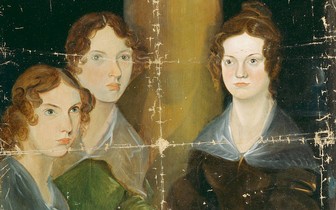 Charlotte Brontë, born in 1816 in Thornton, Yorkshire, lived in London for periods of varying length, but never felt at home there. After the great success of Jane Eyre, when she visited London, she would be invited to important social circles and meet with celebrities such as Harriet Martineau, Elizabeth Gaskell, G.H. Lewes and William Thackeray. Yet she was very shy and would not speak a great deal. It was precisely on the occasion of an evening event held at Thackeray's house that she remained rather quiet, disappointing the guests, who had expected a rather more brilliant form of conversation from her.
Charlotte Brontë, born in 1816 in Thornton, Yorkshire, lived in London for periods of varying length, but never felt at home there. After the great success of Jane Eyre, when she visited London, she would be invited to important social circles and meet with celebrities such as Harriet Martineau, Elizabeth Gaskell, G.H. Lewes and William Thackeray. Yet she was very shy and would not speak a great deal. It was precisely on the occasion of an evening event held at Thackeray's house that she remained rather quiet, disappointing the guests, who had expected a rather more brilliant form of conversation from her. 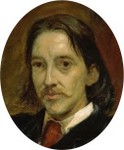 Robert Louis Stevenson, born in 1850 in Edinburgh, described London as a monstrosity on the banks of the Thames, a fertile terrain for the formation of schizophrenic personalities.
Robert Louis Stevenson, born in 1850 in Edinburgh, described London as a monstrosity on the banks of the Thames, a fertile terrain for the formation of schizophrenic personalities. 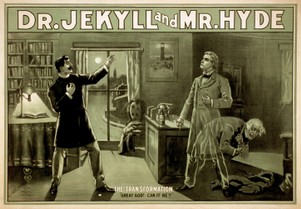 The capital is seen through the eyes of Dr. Jekyll, who transforms into Mr. Hyde. Due to his bad deeds, the diabolical Mr. Hyde finds an ally in the feeble, hissing light of the gas lamps, beneath which evil prospers. The background setting for the metamorphosis and split-personality of the character is portrayed by the description of the places he moves through, the intricate labyrinth of streets, the atmosphere of mystery created by the darkness, mist, and wind.
The capital is seen through the eyes of Dr. Jekyll, who transforms into Mr. Hyde. Due to his bad deeds, the diabolical Mr. Hyde finds an ally in the feeble, hissing light of the gas lamps, beneath which evil prospers. The background setting for the metamorphosis and split-personality of the character is portrayed by the description of the places he moves through, the intricate labyrinth of streets, the atmosphere of mystery created by the darkness, mist, and wind. 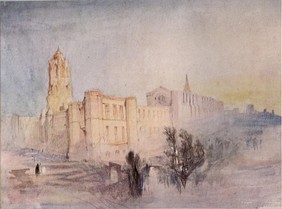
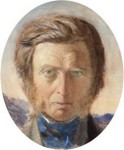 John Ruskin was born in London in 1819. He was a poet, an artist, a philosopher, as well as the inspirer of William Morris' Arts and Crafts movement, which was opposed to the mechanization of society. "The world cannot all become one big workshop", he would say, "beautiful things are also necessary..." He went on many journeys and stayed in Italy for long periods in order to study its works of art, about which he wrote many books. Some of his stances on matters such as that concerning restoration were extremely ahead of their time. Also his concerns for the environment, the damage that development was doing to it, and what should have to be done in order to preserve it and maintain a certain balance between Man and nature are the same concerns often put forward today.
John Ruskin was born in London in 1819. He was a poet, an artist, a philosopher, as well as the inspirer of William Morris' Arts and Crafts movement, which was opposed to the mechanization of society. "The world cannot all become one big workshop", he would say, "beautiful things are also necessary..." He went on many journeys and stayed in Italy for long periods in order to study its works of art, about which he wrote many books. Some of his stances on matters such as that concerning restoration were extremely ahead of their time. Also his concerns for the environment, the damage that development was doing to it, and what should have to be done in order to preserve it and maintain a certain balance between Man and nature are the same concerns often put forward today. 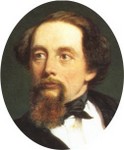 Charles Dickens is probably the most famous of all English writers and is also the one whose life is most closely bound to the capital.
Charles Dickens is probably the most famous of all English writers and is also the one whose life is most closely bound to the capital. 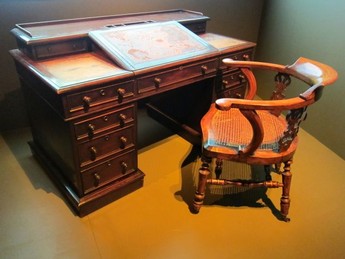 His first great love, Maria Beadnell, was the daughter of a banker who was a resident at the address of 2, Lombard Street, and the eighteen-year-old Dickens would cross the whole city just to steal a glance at her window. He then drew inspiration from her for the character of Dora Spenlow in David Copperfield. The protagonist wishes to marry her, only to realize that such a "child-wife" is not suitable for him. Maria also appears in Little Dorrit, in the guise of Flora Finching. Twenty years later, Dickens encountered Maria once again and found before himself an obese lady who constantly giggled in a silly way.
His first great love, Maria Beadnell, was the daughter of a banker who was a resident at the address of 2, Lombard Street, and the eighteen-year-old Dickens would cross the whole city just to steal a glance at her window. He then drew inspiration from her for the character of Dora Spenlow in David Copperfield. The protagonist wishes to marry her, only to realize that such a "child-wife" is not suitable for him. Maria also appears in Little Dorrit, in the guise of Flora Finching. Twenty years later, Dickens encountered Maria once again and found before himself an obese lady who constantly giggled in a silly way. 
Although he was no political thinker nor an accurate historian, Dickens imposed his vision of the capital. He did not set his novels in the London of the corridors of power, of monuments, or of artistic areas, but in the less-known poor neighbourhoods, in the courtyards, prisons, reformatories, offices, and places of entertainment for the common people. Dickens arrived in London in 1822, with his parents. He was ten years old and their house was in Bayham Street, in the Camden Town area. Upon what today is a hospital wall, a plaque reminds us of the fact that their home was once there. Later on, Dickens described the neighbours as follows: “They seemed to be inclined to throw anything they no longer needed out into the middle of the street. The cabbage leaves would make the cobblestones slippery and give a messy impression. Not only was there rubbish in the form of vegetables, but I also saw a shoe, a cap, an umbrella... each of them in a different stage of decay." 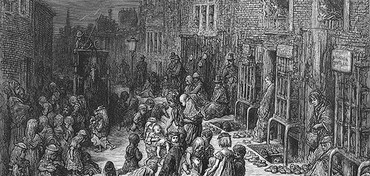 After a while, the Dickens family moved to 4, Gower Street, where they attempted to open a school. Unfortunately, things did not go as planned, and in 1824, his father was taken off to the Marshalsea prison in Southwark for debts. Charles and his mother went to live near there, in Lant Street, and the boy found a job in a factory. Between 1835 and 1836, Dickens lived in Holborn, at Furnival's Inn, where in his free time he began to publish the Pickwick Papers. In 1836 he married Catherine Hogarth in the church of St Luke's, in Chelsea. From 1837 to 1839, he lived at the address of 48, Doughty Street, in Bloomsbury. This was to be one of the most productive periods of his life. The adventures of Oliver Twist (1838), and Nicholas Nickleby (1839) were conceived in that house, which is now a museum full of memories of this man of literature. This is however quite contrary to what he would have wanted, seeing as Dickens had prohibited any form of commemoration. Between 1839 and 1850, he lived at 1, Devonshire Terrace, in St Marylebone. Here he wrote David Copperfield, Barnaby Rudge and A Christmas Carol. Between 1851 and 1860, Dickens lived in Bloomsbury, in Tavistock Square, where he wrote Hard Times and Little Dorrit. Today the house is the headquarters for the British Medical Association, however the garden has been preserved as it was.
After a while, the Dickens family moved to 4, Gower Street, where they attempted to open a school. Unfortunately, things did not go as planned, and in 1824, his father was taken off to the Marshalsea prison in Southwark for debts. Charles and his mother went to live near there, in Lant Street, and the boy found a job in a factory. Between 1835 and 1836, Dickens lived in Holborn, at Furnival's Inn, where in his free time he began to publish the Pickwick Papers. In 1836 he married Catherine Hogarth in the church of St Luke's, in Chelsea. From 1837 to 1839, he lived at the address of 48, Doughty Street, in Bloomsbury. This was to be one of the most productive periods of his life. The adventures of Oliver Twist (1838), and Nicholas Nickleby (1839) were conceived in that house, which is now a museum full of memories of this man of literature. This is however quite contrary to what he would have wanted, seeing as Dickens had prohibited any form of commemoration. Between 1839 and 1850, he lived at 1, Devonshire Terrace, in St Marylebone. Here he wrote David Copperfield, Barnaby Rudge and A Christmas Carol. Between 1851 and 1860, Dickens lived in Bloomsbury, in Tavistock Square, where he wrote Hard Times and Little Dorrit. Today the house is the headquarters for the British Medical Association, however the garden has been preserved as it was.
 After a while, the Dickens family moved to 4, Gower Street, where they attempted to open a school. Unfortunately, things did not go as planned, and in 1824, his father was taken off to the Marshalsea prison in Southwark for debts. Charles and his mother went to live near there, in Lant Street, and the boy found a job in a factory. Between 1835 and 1836, Dickens lived in Holborn, at Furnival's Inn, where in his free time he began to publish the Pickwick Papers. In 1836 he married Catherine Hogarth in the church of St Luke's, in Chelsea. From 1837 to 1839, he lived at the address of 48, Doughty Street, in Bloomsbury. This was to be one of the most productive periods of his life. The adventures of Oliver Twist (1838), and Nicholas Nickleby (1839) were conceived in that house, which is now a museum full of memories of this man of literature. This is however quite contrary to what he would have wanted, seeing as Dickens had prohibited any form of commemoration. Between 1839 and 1850, he lived at 1, Devonshire Terrace, in St Marylebone. Here he wrote David Copperfield, Barnaby Rudge and A Christmas Carol. Between 1851 and 1860, Dickens lived in Bloomsbury, in Tavistock Square, where he wrote Hard Times and Little Dorrit. Today the house is the headquarters for the British Medical Association, however the garden has been preserved as it was.
After a while, the Dickens family moved to 4, Gower Street, where they attempted to open a school. Unfortunately, things did not go as planned, and in 1824, his father was taken off to the Marshalsea prison in Southwark for debts. Charles and his mother went to live near there, in Lant Street, and the boy found a job in a factory. Between 1835 and 1836, Dickens lived in Holborn, at Furnival's Inn, where in his free time he began to publish the Pickwick Papers. In 1836 he married Catherine Hogarth in the church of St Luke's, in Chelsea. From 1837 to 1839, he lived at the address of 48, Doughty Street, in Bloomsbury. This was to be one of the most productive periods of his life. The adventures of Oliver Twist (1838), and Nicholas Nickleby (1839) were conceived in that house, which is now a museum full of memories of this man of literature. This is however quite contrary to what he would have wanted, seeing as Dickens had prohibited any form of commemoration. Between 1839 and 1850, he lived at 1, Devonshire Terrace, in St Marylebone. Here he wrote David Copperfield, Barnaby Rudge and A Christmas Carol. Between 1851 and 1860, Dickens lived in Bloomsbury, in Tavistock Square, where he wrote Hard Times and Little Dorrit. Today the house is the headquarters for the British Medical Association, however the garden has been preserved as it was. 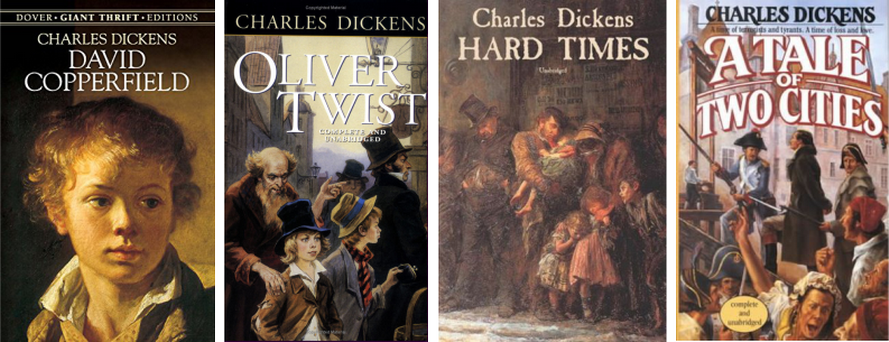
Also the Athenaeum club, at 107, Pall Mall, and the small Cuming museum in Southwark, host many small items to which the writer refers to in his novels, and which are evocative of the London of his time. In his works, in fact, Dickens reflects the social reality which was contemporary to him, describing the dynamic evolution of the capital and the birth of a new "technological landscape", as well as the chaotic urban proliferation. The theme of the outbreak of railways was developed in Dombey and Son, and more widely in the third volume of Household Words. In order to find material for his books, Dickens would walk around the city. He would do so in the daytime, but more often so by night, encouraged by the insomnia he suffered from. For his last book, which he never managed to complete, namely The Mystery of Edwin Drood, the writer would go for long walks along the Thames. He would amble along the alleyways of Limehouse so as to absorb its atmosphere, enter pubs where opium was smoked on Ratcliffe Lane, and then, as for his previous books, he would use the facts he had witnessed directly, and blend them together with those created from his own imagination.
 The English artist and writer,
The English artist and writer, 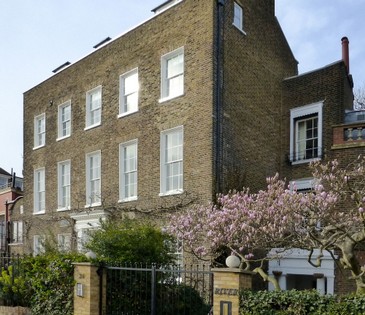 William Morris was born on March 24th, 1834 in a pretty house in Walthamstow, in north-east London, which was later transformed into a museum. He lived in Hammersmith, on the Thames, and had a second house just outside London, Kelmscott Manor, in Oxfordshire, where he had set up a typography known as the Kelmscott Press. Subsequently, the country house became the Red House, in Kent. For his entire life, Morris was divided between his activity as a writer, his commitment to the publishing company, and the artisan's laboratory, destined, in his words, “to give dignity and value back to manual labour, against mass-production and industrial work." His most famous book was the utopian News from Nowhere (1890), where a new society is envisaged. The book is not lacking in original and ironic descriptions, such as that of Parliament Square, depicted as an enormous market for fertilizers.
William Morris was born on March 24th, 1834 in a pretty house in Walthamstow, in north-east London, which was later transformed into a museum. He lived in Hammersmith, on the Thames, and had a second house just outside London, Kelmscott Manor, in Oxfordshire, where he had set up a typography known as the Kelmscott Press. Subsequently, the country house became the Red House, in Kent. For his entire life, Morris was divided between his activity as a writer, his commitment to the publishing company, and the artisan's laboratory, destined, in his words, “to give dignity and value back to manual labour, against mass-production and industrial work." His most famous book was the utopian News from Nowhere (1890), where a new society is envisaged. The book is not lacking in original and ironic descriptions, such as that of Parliament Square, depicted as an enormous market for fertilizers.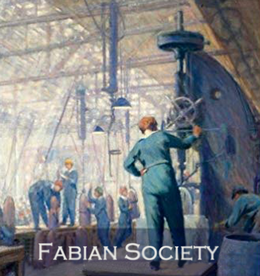
 George Bernard Shaw was born in 1856 in Dublin. Writer of novels and essays, playwright, and author of over sixty comedies, he lived at 29, Fitzroy Square, and then at 33, Kensington Gardens. Later on, he also became the owner of a house in the countryside of Hertfordshire. Shaw adhered to socialism and was a member of the Fabian Society. Many of his works concern the system of government, religion, social issues such as exploitation, and the lack of women's rights. However, such themes are treated with light-hearted irony, which keeps the reader's interest peaked and avoids boredom. Shaw was elected administrative councillor in the Progressive group, and due to his vehement tones during his public speeches, was considered an agitator. Shaw's best-known work remains to date Pygmalion, set partly in Covent Garden.
George Bernard Shaw was born in 1856 in Dublin. Writer of novels and essays, playwright, and author of over sixty comedies, he lived at 29, Fitzroy Square, and then at 33, Kensington Gardens. Later on, he also became the owner of a house in the countryside of Hertfordshire. Shaw adhered to socialism and was a member of the Fabian Society. Many of his works concern the system of government, religion, social issues such as exploitation, and the lack of women's rights. However, such themes are treated with light-hearted irony, which keeps the reader's interest peaked and avoids boredom. Shaw was elected administrative councillor in the Progressive group, and due to his vehement tones during his public speeches, was considered an agitator. Shaw's best-known work remains to date Pygmalion, set partly in Covent Garden. 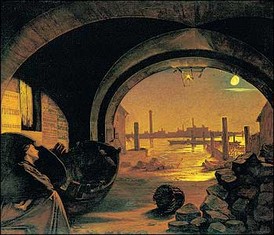
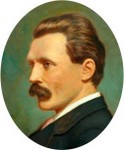 George Gissing was born in 1857 in Wakefield, Yorkshire. He lived in Tottenham Court Road, in a near condition of poverty. His description of the London of the needy is unique, due to the fact that his point of view is quite different from that of other English novelists. As a young man, he had developed a passion for socialism, although he had never had much faith in a working class government. In his private life he became a martyr: he had managed to be expelled from university for having helped a prostitute in need, and had stolen money from his colleagues. Then, still with the noble intent of aiding the weak, he had married a common woman, however she despised his work as a writer and gave him a hard time with her violent outbursts of rage. Gissing's best works are New Grub Street and Born in Exile. He also wrote a travel journal, By the Ionian Sea, on his time spent in southern Italy.
George Gissing was born in 1857 in Wakefield, Yorkshire. He lived in Tottenham Court Road, in a near condition of poverty. His description of the London of the needy is unique, due to the fact that his point of view is quite different from that of other English novelists. As a young man, he had developed a passion for socialism, although he had never had much faith in a working class government. In his private life he became a martyr: he had managed to be expelled from university for having helped a prostitute in need, and had stolen money from his colleagues. Then, still with the noble intent of aiding the weak, he had married a common woman, however she despised his work as a writer and gave him a hard time with her violent outbursts of rage. Gissing's best works are New Grub Street and Born in Exile. He also wrote a travel journal, By the Ionian Sea, on his time spent in southern Italy. 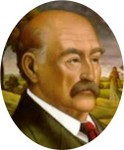 On the turn of the century - Thomas Hardy was not an enthusiast with regards to life in London, as he makes quite clear in his novel, Far from the Maddening Crowd (1874). After having studied to be an architect, he undertook his first journey to the metropolis in 1862, when he was just twenty-one years old, winning numerous prizes awarded by the association of architects. On one hand, the whole matter was gratifying for him, on the other, belonging to an inferior social class, he felt discriminated. During his journeys to the city from his house in the countryside, Hardy remained faithful to an apartment in Pelham Crescent, in South Kensington, which he would always return to.
On the turn of the century - Thomas Hardy was not an enthusiast with regards to life in London, as he makes quite clear in his novel, Far from the Maddening Crowd (1874). After having studied to be an architect, he undertook his first journey to the metropolis in 1862, when he was just twenty-one years old, winning numerous prizes awarded by the association of architects. On one hand, the whole matter was gratifying for him, on the other, belonging to an inferior social class, he felt discriminated. During his journeys to the city from his house in the countryside, Hardy remained faithful to an apartment in Pelham Crescent, in South Kensington, which he would always return to. 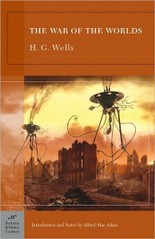
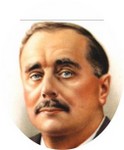 H.G. Wells, born in Bromley, Kent, in 1866, is considered the initiator of the science fiction novel. His work is animated by the acute sense of urban evolution which was already underway at his time, and by the change in existing social structures. Wells, who was a passionate socialist and pacifist, attended science college in South Kensington with a scholarship and had followed biology courses.
H.G. Wells, born in Bromley, Kent, in 1866, is considered the initiator of the science fiction novel. His work is animated by the acute sense of urban evolution which was already underway at his time, and by the change in existing social structures. Wells, who was a passionate socialist and pacifist, attended science college in South Kensington with a scholarship and had followed biology courses. His two most famous books are: The Time Machine and War of the Worlds, from which sprung the homonymous radio drama interpreted by Orson Welles, which plunged thousands of American listeners into a state of panic. In his works, amongst which The Invisible Man, the author implemented a fitting fusion between fantastical atmospheres and scientific thought.
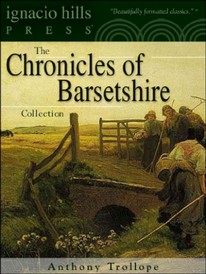
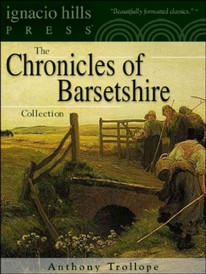 In the novel The Way We Live Now (1875), Anthony Trollope, through careful realism, depicted a comedy of power and vanity on the banks of the Thames. His books feature social climbers who have fallen into bankruptcy and are forced to sell what little remains of their family assets. In yet another novel, also tied to London, The Prime Minister (1876), Trollope offers an analysis of politics and its interests. He states that the latter are the prime driving force behind games of power. Trollope worked at the Royal Mail for his entire life, and was responsible for introducing pillar boxes, pillar-shaped post boxes which are still today functional throughout the United Kingdom with their bright red coat of paint.
In the novel The Way We Live Now (1875), Anthony Trollope, through careful realism, depicted a comedy of power and vanity on the banks of the Thames. His books feature social climbers who have fallen into bankruptcy and are forced to sell what little remains of their family assets. In yet another novel, also tied to London, The Prime Minister (1876), Trollope offers an analysis of politics and its interests. He states that the latter are the prime driving force behind games of power. Trollope worked at the Royal Mail for his entire life, and was responsible for introducing pillar boxes, pillar-shaped post boxes which are still today functional throughout the United Kingdom with their bright red coat of paint. 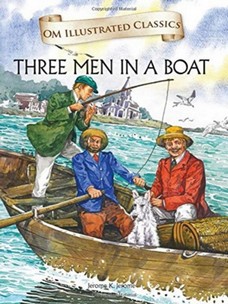
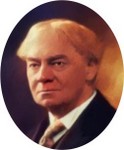 Jerome Klapka Jerome (the strange name is a variation of his true one, Jerome Clapp) is famous for his book Three Men in a Boat. His intention was for the work to be a tourist guide, however, the further he got into writing it, the more the comical element came to have the upper hand. He wrote it after having spent his river honeymoon with Georgina Elizabeth Henrietta Stanley Marris, whom he married on June 21st, 1888. The exhilarating misadventures of the brief cruise on the Thames, going from Kingston-upon-Thames to Oxford, which is described in the book, range from the mishaps encountered whilst attempting to set up a tent to the difficulties of outdoor cooking, not to mention the unreliability of barometers or the boat's stubborn resistance against being manoeuvred. Entertaining anecdotes are punctuated by a more serious tone, where the author delivers information on Hampton Court, Monkey Island and the Magna Carta (or Great Charter of Liberties)... The book can also be read from a social viewpoint, as the holiday described was one of the first examples of escapism during free time. In the Nineteenth Century it was not a common affair for three employees to take a weekend holiday trip and go to have a feast on the river. It was only later on in history that mass holidays started to become a part of the English lifestyle.
Jerome Klapka Jerome (the strange name is a variation of his true one, Jerome Clapp) is famous for his book Three Men in a Boat. His intention was for the work to be a tourist guide, however, the further he got into writing it, the more the comical element came to have the upper hand. He wrote it after having spent his river honeymoon with Georgina Elizabeth Henrietta Stanley Marris, whom he married on June 21st, 1888. The exhilarating misadventures of the brief cruise on the Thames, going from Kingston-upon-Thames to Oxford, which is described in the book, range from the mishaps encountered whilst attempting to set up a tent to the difficulties of outdoor cooking, not to mention the unreliability of barometers or the boat's stubborn resistance against being manoeuvred. Entertaining anecdotes are punctuated by a more serious tone, where the author delivers information on Hampton Court, Monkey Island and the Magna Carta (or Great Charter of Liberties)... The book can also be read from a social viewpoint, as the holiday described was one of the first examples of escapism during free time. In the Nineteenth Century it was not a common affair for three employees to take a weekend holiday trip and go to have a feast on the river. It was only later on in history that mass holidays started to become a part of the English lifestyle. 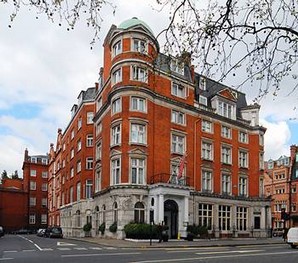
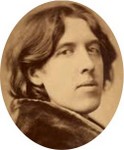 After 1884, the year of his marriage, Oscar Wilde lived for eleven years at the address of 16 (now 33), Tite Street, near the Chelsea Royal Hospital. After a while, when he started to have his well-known problems with justice, he went back to living with his mother in Oakley Street. On April 5th, 1895 he was arrested at the Cadogan Hotel, at 75, Sloane Street, in Knightsbridge. The arrest came to happen due to the marquis of Queensberry having reported him to the authorities. The latter was the father of Alfred Douglas, who was Wilde's lover. As Wilde was suffering the consequences of the trial and the sentence to two years' forced labour, his comedies became a great success at the theatre of St James. After being jailed in the prisons of Pentonville and Wandsworth, in London, he was transferred to Reading, where he wrote the beautiful ballad, overflowing with forlornness, which contains the name of the prison in its title.
After 1884, the year of his marriage, Oscar Wilde lived for eleven years at the address of 16 (now 33), Tite Street, near the Chelsea Royal Hospital. After a while, when he started to have his well-known problems with justice, he went back to living with his mother in Oakley Street. On April 5th, 1895 he was arrested at the Cadogan Hotel, at 75, Sloane Street, in Knightsbridge. The arrest came to happen due to the marquis of Queensberry having reported him to the authorities. The latter was the father of Alfred Douglas, who was Wilde's lover. As Wilde was suffering the consequences of the trial and the sentence to two years' forced labour, his comedies became a great success at the theatre of St James. After being jailed in the prisons of Pentonville and Wandsworth, in London, he was transferred to Reading, where he wrote the beautiful ballad, overflowing with forlornness, which contains the name of the prison in its title.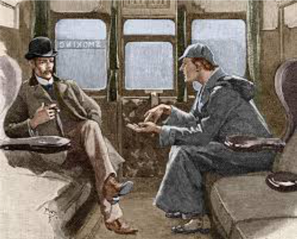
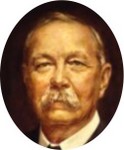 The Scotsman Arthur Conan Doyle moved to London in 1891, at 12, Tennison Road. At the time, the red-brick house, which is now near the underground station of Norwood Junction, was to be found in the open countryside. As well as visiting Sherlock Holmes' fictional home in 221 b, Baker Street, which is quite a popular tourist attraction, it is also interesting to go to the studio-home of Dr Conan Doyle, an ophthalmologist. The practice suffered from a shortage of patients, however he fortunately did not suffer any shortage of ideas for his future stories about the detective.
The Scotsman Arthur Conan Doyle moved to London in 1891, at 12, Tennison Road. At the time, the red-brick house, which is now near the underground station of Norwood Junction, was to be found in the open countryside. As well as visiting Sherlock Holmes' fictional home in 221 b, Baker Street, which is quite a popular tourist attraction, it is also interesting to go to the studio-home of Dr Conan Doyle, an ophthalmologist. The practice suffered from a shortage of patients, however he fortunately did not suffer any shortage of ideas for his future stories about the detective.  D.H. Lawrence, born in 1885 in Nottinghamshire, hated London with a passion. He hated modernity and the rapid industrialization of the capital, of which he could not stress enough the dehumanizing effects. After having travelled around France and Italy with his wife-to-be, Frieda Von Richthofen, Lawrence returned to London just before the beginning of the Great War (or World War I). However he was forced to set off again immediately because of the fact that both him and his wife, who was the cousin of Manfred von Richtofen, the so-called "Red Baron", were suspected of being spies for the German forces. The Lawrences never returned to England and travelled first throughout Italy, then around the United States, Ceylon, Australia, and Mexico, where the writer spent his final days.
D.H. Lawrence, born in 1885 in Nottinghamshire, hated London with a passion. He hated modernity and the rapid industrialization of the capital, of which he could not stress enough the dehumanizing effects. After having travelled around France and Italy with his wife-to-be, Frieda Von Richthofen, Lawrence returned to London just before the beginning of the Great War (or World War I). However he was forced to set off again immediately because of the fact that both him and his wife, who was the cousin of Manfred von Richtofen, the so-called "Red Baron", were suspected of being spies for the German forces. The Lawrences never returned to England and travelled first throughout Italy, then around the United States, Ceylon, Australia, and Mexico, where the writer spent his final days.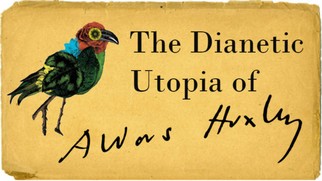
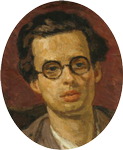 Aldous Huxley described the dehumanizing aspects of scientific progress, and his most famous book, Brave New World (1932), belongs precisely to the genre of dystopian literature. The latter covers the subject of a society which is undesirable in each and every aspect, where pharmacological methods have been established, inducing people to love their conditions of slavery. In such a way, dictatorships are created without a single tear being shed, painless concentration camps for entire societies, where people are deprived of their freedom, whilst at the same time remaining artificially happy. Huxley also described the "physical" and social transformation of London. In Belgravia, where the aristocrats once lived and where there were once stables and squalid living quarters of the household staff located in the alleyways behind the buildings, during the writer's time, the Daimlers of the rich bourgeois had taken the place of horses and part of the stables had been expensively renovated to become the home of people who were well-off.
Aldous Huxley described the dehumanizing aspects of scientific progress, and his most famous book, Brave New World (1932), belongs precisely to the genre of dystopian literature. The latter covers the subject of a society which is undesirable in each and every aspect, where pharmacological methods have been established, inducing people to love their conditions of slavery. In such a way, dictatorships are created without a single tear being shed, painless concentration camps for entire societies, where people are deprived of their freedom, whilst at the same time remaining artificially happy. Huxley also described the "physical" and social transformation of London. In Belgravia, where the aristocrats once lived and where there were once stables and squalid living quarters of the household staff located in the alleyways behind the buildings, during the writer's time, the Daimlers of the rich bourgeois had taken the place of horses and part of the stables had been expensively renovated to become the home of people who were well-off. 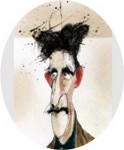 The writer Eric Arthur Blair, better known by his pseudonym George Orwell, the famous author of 1984 and Animal Farm, was born in the faraway province of Bihar, in India, and had moved to England in order to undertake hi studies. Having finished his schooling, he left for Burma (currently Myanmar) to serve the Empire as a police officer, however a severe illness forced him to return to his homeland. In 1927, he moved to an apartment in Portobello Road. He had always been interested in the living conditions of the poor, and would leave home each morning to explore East End, as he was later do also in Paris, where he worked as a scullery boy.
The writer Eric Arthur Blair, better known by his pseudonym George Orwell, the famous author of 1984 and Animal Farm, was born in the faraway province of Bihar, in India, and had moved to England in order to undertake hi studies. Having finished his schooling, he left for Burma (currently Myanmar) to serve the Empire as a police officer, however a severe illness forced him to return to his homeland. In 1927, he moved to an apartment in Portobello Road. He had always been interested in the living conditions of the poor, and would leave home each morning to explore East End, as he was later do also in Paris, where he worked as a scullery boy. 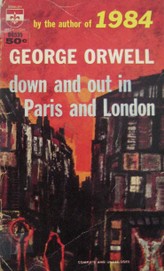 This dual experience merged together and took form in his book Down and Out in Paris and London, which came out in 1933. In it, Orwell carried out an analysis of the human and social condition of the lower classes. In order to establish an even greater contact with the latter, on Christmas Eve, 1931, he managed to get himself arrested for being "drunk and incapable". His account speaks of a cell with a stench and cold enough to make any man faint.
This dual experience merged together and took form in his book Down and Out in Paris and London, which came out in 1933. In it, Orwell carried out an analysis of the human and social condition of the lower classes. In order to establish an even greater contact with the latter, on Christmas Eve, 1931, he managed to get himself arrested for being "drunk and incapable". His account speaks of a cell with a stench and cold enough to make any man faint. 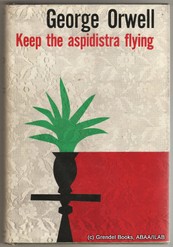 Orwell's conclusions on the city of London are pessimistic. The capital represents a world that is hostile to the individual; it is described as a desert capable of swallowing people up and alienating them. Thus the desire to flee and the joy of evasion from the daily routine would grow strong. A way to escape from this sense of imprisonment, he writes in Keep the Aspidistra Flying, is to take a walk outside the city. In fact, the two protagonists of the book stop off at Slough and head for Farnham Common. They walk along a road full of deep ruts, and find themselves among moist tufts of grass in the fields, near the birch woods, as all around them not a branch or a blade of grass move in the slightest.
Orwell's conclusions on the city of London are pessimistic. The capital represents a world that is hostile to the individual; it is described as a desert capable of swallowing people up and alienating them. Thus the desire to flee and the joy of evasion from the daily routine would grow strong. A way to escape from this sense of imprisonment, he writes in Keep the Aspidistra Flying, is to take a walk outside the city. In fact, the two protagonists of the book stop off at Slough and head for Farnham Common. They walk along a road full of deep ruts, and find themselves among moist tufts of grass in the fields, near the birch woods, as all around them not a branch or a blade of grass move in the slightest."The trees stood like ghosts in the still, misty air. The dew, the stillness, the satiny stems of the birches, the softness of the turf under your feet! Nevertheless, at first they felt shrunken and out of place, as Londoners do when they get outside London. Gordon felt as though he had been living underground for a long time past. Also, they were out of breath before they had walked far, because they were only used to London walking..." Fortunately, there are small pleasures that the metropolis offers to those who have little money. Amongst these, is a cup of piping hot tea. "In the Charing Cross Road the teashops called like sirens. Once the glass door of a Lyons swung open, letting out a wave of hot cake-scented air. It almost overcame him. After all, why not go in? You could sit there for nearly an hour. A cup of tea twopence, two buns a penny each."
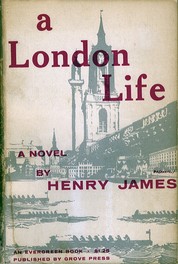 In the Twentieth Century, cultural life in London changed enormously, as the leading trait of the city had become cosmopolitanism, and many different cultural influxes had integrated with national culture.
In the Twentieth Century, cultural life in London changed enormously, as the leading trait of the city had become cosmopolitanism, and many different cultural influxes had integrated with national culture.  Henry James, American by birth, went to live in London in 1876, when he was little more than thirty years old. After some time, he traced a portrait of the city in his London Sights. He had chosen around forty places (although based on his initial intention, there were supposed to be more of them) in order to describe them and express his opinion on them. For ancient London, he had chosen Tower Bridge as an example of historical kitsch. He had not been able to find any trace of Shakespeare's period, save ugly factories and laboratories. He had been fascinated by Woolwich, the place where warships had been built since the days of Henry VIII. Yet as well as being the headquarters for the Empire's arsenal, Woolwich also hosted some important porcelain factories. The artefacts were subject to extremely severe tests and were not to break when thrown to the ground from a height of two meters.
Henry James, American by birth, went to live in London in 1876, when he was little more than thirty years old. After some time, he traced a portrait of the city in his London Sights. He had chosen around forty places (although based on his initial intention, there were supposed to be more of them) in order to describe them and express his opinion on them. For ancient London, he had chosen Tower Bridge as an example of historical kitsch. He had not been able to find any trace of Shakespeare's period, save ugly factories and laboratories. He had been fascinated by Woolwich, the place where warships had been built since the days of Henry VIII. Yet as well as being the headquarters for the Empire's arsenal, Woolwich also hosted some important porcelain factories. The artefacts were subject to extremely severe tests and were not to break when thrown to the ground from a height of two meters.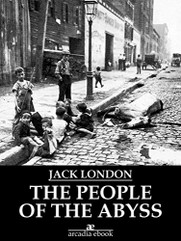
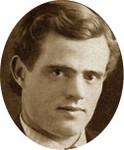 Jack London had never lived in London, but arrived there in the summer of 1902 in order to gather material for a work he had in mind. Disguised as a poor person, he took a taxi to Whitechapel, the area famous for Jack the Ripper, so that he could experience the lifestyle of poor labourers and beggars. His experience flowed into the heartfelt, dramatic novel, The People of the Abyss, published in 1903.
Jack London had never lived in London, but arrived there in the summer of 1902 in order to gather material for a work he had in mind. Disguised as a poor person, he took a taxi to Whitechapel, the area famous for Jack the Ripper, so that he could experience the lifestyle of poor labourers and beggars. His experience flowed into the heartfelt, dramatic novel, The People of the Abyss, published in 1903. 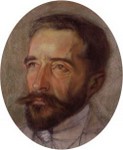 In the novel The Secret Agent (1907), Joseph Conrad, from Poland, who for many years was a captain aboard British merchant ships and who filled his books with his seafaring experience, fantasizes about the Greenwich Observatory being the target of a terrorist bomb attack.
In the novel The Secret Agent (1907), Joseph Conrad, from Poland, who for many years was a captain aboard British merchant ships and who filled his books with his seafaring experience, fantasizes about the Greenwich Observatory being the target of a terrorist bomb attack. 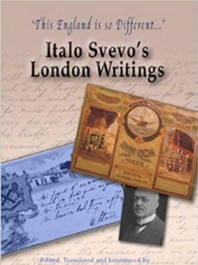 Among the writers who described London but were not themselves English, is Ettore Schmitz, better known under the pseudonym of Italo Svevo.
Among the writers who described London but were not themselves English, is Ettore Schmitz, better known under the pseudonym of Italo Svevo. 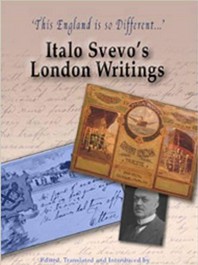 He went to London several times at the beginning of the Twentieth Century for business. For a man such as himself, who regarded everything with a sense of awe, albeit not without some degree of repulsion, the capital had a strange charm. The first time, he stayed in a hotel in Russell Square for three months. He witnessed the street policemen, whom he saw as both respected and respectful, and the general feeling of order in the streets crowded by horse-drawn omnibuses. Svevo would travel to Devonport and Chatham on a square-shaped coach built in wood and iron, which sported vivid colours. At first, the lively air of freedom that could be felt in London had intoxicated him, however, after a while, the writer started to feel oppressed by the rigid social conventions. He could hardly wait to get back to Trieste, and complained continuously about the language barrier. According to him, communicating with the English was feasible when he had the person in front of him, but it was a nightmare to be understood over the phone. The appliance refused to convey the words pronounced by him, with the result of causing the most complete pandemonium. The person on the other end of the phone would not understand him, and would ceaselessly yell: “Who are you? Whom do you want?” Thus he would resignedly spell out the name of the person he was seeking to contact. Svevo later returned to London twelve years later. In the place of horse-drawn coaches and carts, he found automobiles and much faster traffic. Yet, when compared to Trieste, he admitted that crossing the street in front of the Bank of England was still safer than traversing that of Corso Italia, a main street of his native town. In spite of the strong stench of petrol and the fumes that made one's eyes water, the advantages of speedy transport were considerable.
He went to London several times at the beginning of the Twentieth Century for business. For a man such as himself, who regarded everything with a sense of awe, albeit not without some degree of repulsion, the capital had a strange charm. The first time, he stayed in a hotel in Russell Square for three months. He witnessed the street policemen, whom he saw as both respected and respectful, and the general feeling of order in the streets crowded by horse-drawn omnibuses. Svevo would travel to Devonport and Chatham on a square-shaped coach built in wood and iron, which sported vivid colours. At first, the lively air of freedom that could be felt in London had intoxicated him, however, after a while, the writer started to feel oppressed by the rigid social conventions. He could hardly wait to get back to Trieste, and complained continuously about the language barrier. According to him, communicating with the English was feasible when he had the person in front of him, but it was a nightmare to be understood over the phone. The appliance refused to convey the words pronounced by him, with the result of causing the most complete pandemonium. The person on the other end of the phone would not understand him, and would ceaselessly yell: “Who are you? Whom do you want?” Thus he would resignedly spell out the name of the person he was seeking to contact. Svevo later returned to London twelve years later. In the place of horse-drawn coaches and carts, he found automobiles and much faster traffic. Yet, when compared to Trieste, he admitted that crossing the street in front of the Bank of England was still safer than traversing that of Corso Italia, a main street of his native town. In spite of the strong stench of petrol and the fumes that made one's eyes water, the advantages of speedy transport were considerable. 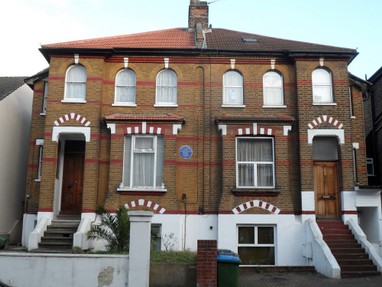 It would have been preferable, however, if the legislators had provided for some form of cap or regulation on traffic by order of law, before proceeding to pave the streets with tarmac, even those in the city surroundings, resulting in everyone madly rushing at high speed. Svevo was sure that also his fellow inhabitants of Trieste would have preferred something similar, and that the prospect of high speed would have stirred the desire of the drivers of his hometown. After his first stay in Russell Lane, Svevo always stayed in Church Lane, a sloping street, both clean and tidy, flanked by the brick houses of office workers, and brimming with shops. From here, he would travel by train to work in the shipyards in Plymouth. Some stretches of the city were already covered by the underground train service, were different types of passengers were seen to be transiting, depending on the time of day. At 6 o'clock in the morning, the writer tells us, public transport was full of bar workers and office cleaners. At 7, it was the turn of the office workers, who would set off to reach those offices which had been made spotless by the cleaners...
It would have been preferable, however, if the legislators had provided for some form of cap or regulation on traffic by order of law, before proceeding to pave the streets with tarmac, even those in the city surroundings, resulting in everyone madly rushing at high speed. Svevo was sure that also his fellow inhabitants of Trieste would have preferred something similar, and that the prospect of high speed would have stirred the desire of the drivers of his hometown. After his first stay in Russell Lane, Svevo always stayed in Church Lane, a sloping street, both clean and tidy, flanked by the brick houses of office workers, and brimming with shops. From here, he would travel by train to work in the shipyards in Plymouth. Some stretches of the city were already covered by the underground train service, were different types of passengers were seen to be transiting, depending on the time of day. At 6 o'clock in the morning, the writer tells us, public transport was full of bar workers and office cleaners. At 7, it was the turn of the office workers, who would set off to reach those offices which had been made spotless by the cleaners... Another Italian, Giuseppe Verdi, arrived in London in June, 1847. He found it to be hectic and noisy, with people yelling, the laments of the poor, and coaches passing though much too fast... London, though, the composer would say, “is a city like no other in the world”.
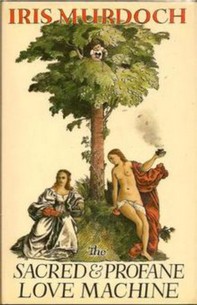 Some authors from the Twentieth Century preferred the London of the past. Amongst the latter was Iris Murdoch, born in Dublin in 1919.
Some authors from the Twentieth Century preferred the London of the past. Amongst the latter was Iris Murdoch, born in Dublin in 1919. 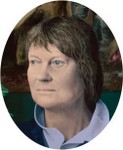 For her, the only conceivable London was the historical and central one. In Under the Net (1954), she wrote: “There are some neighbourhoods of London which are an essential part of the city, others which are not, and the existence of which is purely a matter of chance. All that which lies West of Earl's Court is fortuitous, except for some areas of the riverside, and I do so hate that which is fortuitous...” Murdoch was stricken by the solitude of the City in the evening, after all the office workers had left. In the same book, she wrote: “If you have visited the City by night, you will have seen what mysterious solitude dominates its streets, which are so crowded and noisy during the daytime... Not even a cat or a policeman is to be seen.” Other writers were afflicted by the mediocre and insignificant aspects of everyday life.
For her, the only conceivable London was the historical and central one. In Under the Net (1954), she wrote: “There are some neighbourhoods of London which are an essential part of the city, others which are not, and the existence of which is purely a matter of chance. All that which lies West of Earl's Court is fortuitous, except for some areas of the riverside, and I do so hate that which is fortuitous...” Murdoch was stricken by the solitude of the City in the evening, after all the office workers had left. In the same book, she wrote: “If you have visited the City by night, you will have seen what mysterious solitude dominates its streets, which are so crowded and noisy during the daytime... Not even a cat or a policeman is to be seen.” Other writers were afflicted by the mediocre and insignificant aspects of everyday life. 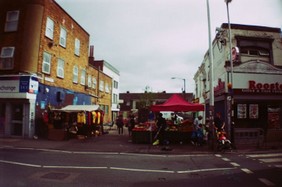
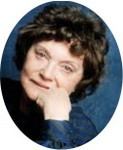 Muriel Spark, for example, in Collected Stories (1967), was dumbfounded by the markets and the banality of the items on show, which she describes as follows: “Covered by a lining of artificial silk of a most ordinary blue is an array of teapots, which have gone from the stands to people's apartments and from the apartments back to the stands once again... There are Georgian spoons propped up against butterfly-shaped stays, miniature portraits of women made in ivory, and boxes for snuff tobacco..." For other authors, such as
Muriel Spark, for example, in Collected Stories (1967), was dumbfounded by the markets and the banality of the items on show, which she describes as follows: “Covered by a lining of artificial silk of a most ordinary blue is an array of teapots, which have gone from the stands to people's apartments and from the apartments back to the stands once again... There are Georgian spoons propped up against butterfly-shaped stays, miniature portraits of women made in ivory, and boxes for snuff tobacco..." For other authors, such as  Norman Collins, instead, the city gets its identity from the old neighbourhoods along the south bank of the Thames. In his book London belongs to me (1945), Collins writes: "London is Mile Road, Walworth Road, Lambeth Road and Elephant and Castle. It is strange how much of the true London lies south of the river, precisely as it was in the days of Shakespeare, and earlier still, in the days of Chaucer. It is as if beyond the Thames, in the far south of London, customs and traditions have changed less than they have up in the parliamentary north..."
Norman Collins, instead, the city gets its identity from the old neighbourhoods along the south bank of the Thames. In his book London belongs to me (1945), Collins writes: "London is Mile Road, Walworth Road, Lambeth Road and Elephant and Castle. It is strange how much of the true London lies south of the river, precisely as it was in the days of Shakespeare, and earlier still, in the days of Chaucer. It is as if beyond the Thames, in the far south of London, customs and traditions have changed less than they have up in the parliamentary north..."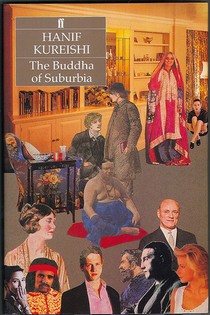 Some authors have set their scenes in neighbourhoods such as Hampstead, Notting Hill, Chelsea or Chiswick, which have a literary and artistic reputation. Other writers, especially those of foreign origin, chose instead to give them a setting in the peripheral suburbs of immigrants. Such was the case of Hanif Kureishi, for example.
Some authors have set their scenes in neighbourhoods such as Hampstead, Notting Hill, Chelsea or Chiswick, which have a literary and artistic reputation. Other writers, especially those of foreign origin, chose instead to give them a setting in the peripheral suburbs of immigrants. Such was the case of Hanif Kureishi, for example. 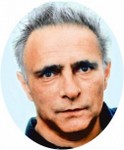 In his tale, The Buddha of Suburbia (1990), the father of an Indian family decides to train for the yoga Olympics, and during this feat of his, ends up upsetting the balance of his life and that of those around him. His struggle against the city emphasizes a London which is fluid, without any precise form, a maze-like city with a network of intertwined streets and alleyways where it is hard to get one's bearings, where it is difficult not to lose oneself. Yet the streets become more and more incomprehensible by the day, until it has become impossible to give the suffocating mass of cement any meaning whatsoever.
In his tale, The Buddha of Suburbia (1990), the father of an Indian family decides to train for the yoga Olympics, and during this feat of his, ends up upsetting the balance of his life and that of those around him. His struggle against the city emphasizes a London which is fluid, without any precise form, a maze-like city with a network of intertwined streets and alleyways where it is hard to get one's bearings, where it is difficult not to lose oneself. Yet the streets become more and more incomprehensible by the day, until it has become impossible to give the suffocating mass of cement any meaning whatsoever. 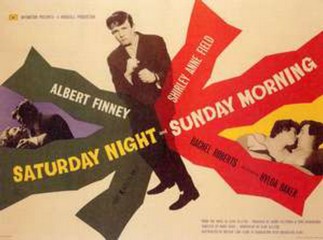
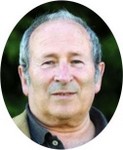 The comedy writer Arnold Wesker, born in London in 1932, was part of the group of novelists and playwrights which went by the name of Angry Young Men. Their anger was more specifically aimed at the ruling class and the social system, condemned by them as unjust and distorted. The playwright and his comrades opened the "Centre 42" at the Round House of Chalk Farm, where they would gather fresh talents and young artists of different leanings. In the comedy Chicken Soup with Barley, Wesker describes the story of a married couple, the Kahns, both Jewish and communists, residents in London, as well as that of their children. Through their everyday life events, the author traces the fall of ideals in a changing world, the disintegration of the family which goes hand in hand with the crumbling of the communism which they believe in.
The comedy writer Arnold Wesker, born in London in 1932, was part of the group of novelists and playwrights which went by the name of Angry Young Men. Their anger was more specifically aimed at the ruling class and the social system, condemned by them as unjust and distorted. The playwright and his comrades opened the "Centre 42" at the Round House of Chalk Farm, where they would gather fresh talents and young artists of different leanings. In the comedy Chicken Soup with Barley, Wesker describes the story of a married couple, the Kahns, both Jewish and communists, residents in London, as well as that of their children. Through their everyday life events, the author traces the fall of ideals in a changing world, the disintegration of the family which goes hand in hand with the crumbling of the communism which they believe in. In his entertaining novel, Towards the End of the Morning (1967), Michael Frayn, born in 1933 in the London suburb of Mill Hill, described the building hosting The Daily Telegraph in Fleet Street as a funereal imperialist monstrosity, where an unknown journalist, a columnist, covers the least important and most boring parts of the newspaper.
In the novel Children in Time (1987), 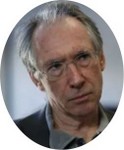 Ian McEwan tells us of the disintegrating lives of many individuals, the harshness of society, and the difficult living conditions of the weakest members of society. Beggars are required to carry a license which permits them to plead for money, and in no circumstance are they allowed to do so around Westminster, Whitehall or Parliament Square.
Ian McEwan tells us of the disintegrating lives of many individuals, the harshness of society, and the difficult living conditions of the weakest members of society. Beggars are required to carry a license which permits them to plead for money, and in no circumstance are they allowed to do so around Westminster, Whitehall or Parliament Square.
 Ian McEwan tells us of the disintegrating lives of many individuals, the harshness of society, and the difficult living conditions of the weakest members of society. Beggars are required to carry a license which permits them to plead for money, and in no circumstance are they allowed to do so around Westminster, Whitehall or Parliament Square.
Ian McEwan tells us of the disintegrating lives of many individuals, the harshness of society, and the difficult living conditions of the weakest members of society. Beggars are required to carry a license which permits them to plead for money, and in no circumstance are they allowed to do so around Westminster, Whitehall or Parliament Square. 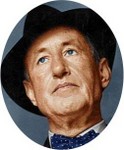 The author of thrillers, as well as the creator of James Bond, Ian Fleming, born at 27, Green Street, in the elegant neighbourhood of Mayfair, the son of a Member of Parliament, prior to becoming a writer, had worked as a stock exchange operator, then later as a journalist. His most famous books, with James Bond as the main character, are Casino Royale and Live and Let Die. However, it is in the thriller Moonraker that the city of London stands at the centre of the plot. The Moonraker is the missile that a German Nazi plans to steer into Buckingham Palace.
The author of thrillers, as well as the creator of James Bond, Ian Fleming, born at 27, Green Street, in the elegant neighbourhood of Mayfair, the son of a Member of Parliament, prior to becoming a writer, had worked as a stock exchange operator, then later as a journalist. His most famous books, with James Bond as the main character, are Casino Royale and Live and Let Die. However, it is in the thriller Moonraker that the city of London stands at the centre of the plot. The Moonraker is the missile that a German Nazi plans to steer into Buckingham Palace. 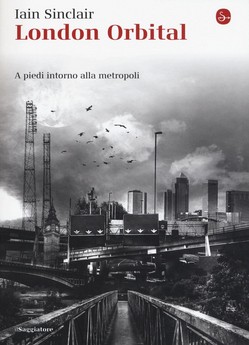
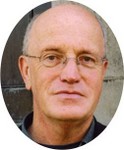 The contemporary writer, Iain Sinclair described Greater London, comprised within the boundaries of the M25 motorway, in his book London Orbital. The extremely busy motorway, always congested, has become a negative term of comparison in current idioms. The writer covered the entire route on foot, dividing it into sections, gathering data, taking notes of observations, and marching through time as well as space.
The contemporary writer, Iain Sinclair described Greater London, comprised within the boundaries of the M25 motorway, in his book London Orbital. The extremely busy motorway, always congested, has become a negative term of comparison in current idioms. The writer covered the entire route on foot, dividing it into sections, gathering data, taking notes of observations, and marching through time as well as space. In conclusion, both the writers of today and those of yesterday have observed the city, formed their ideas about it, and poured these notions into their books. Visitors may do the same, and perhaps attempt to reach beyond stereotypes. Thus, instead of boarding buses for tourists, from which one can see monuments but not the real London, one could instead decide to opt for a trip on one of the many double-decker public transport buses outbound to the peripheral areas of the city. From the front seats of the upper deck, as one watches the houses rush closer, rooms with furniture which is often not all that luxurious, ironing boards arranged in sitting rooms, and bicycles placed out of the rain's grasp, one can witness everyday life in London, as opposed to the polished walls of central buildings. Here we can discover the street furniture of suburban neighbourhoods and the ordinary lives of people working to pay a mortgage, people who have come from far off lands in search of a better future and a normal life.
As well as the famous Charing Cross Road bookshops, there are a few others which are not quite so well-known, but nevertheless extraordinary. Grant & Cutler is one of these, and is located at 107, Charing Cross Rd. in Soho, near the underground stations of Tottenham Court Road and Oxford Circus. It was first opened in 1936, and sells books in foreign languages, reaching a total of one hundred and twenty different languages. There are books treating a variety of subjects, such as politics, literature, and history in the most well-known European languages, but also others in Albanian, Turkish, Bulgarian, Slovenian, Japanese, Polish, or Catalan. One can even find books in Chinese, Azerbaijani, Hawaiian, Ladino, Maori, Shona, Faroese, Greenlandic, and so on...
Of course, it is also possible to come across dictionaries, language learning books, and grammar books.
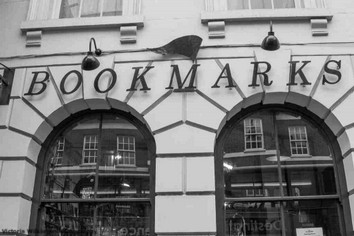 Bookmarks, which has been located at 1, Bloomsbury Street for the past thirty years, near the underground station of Tottenham Court Road, is a socialist bookshop. It resides within a building which is completely white with red frames around its doors and its vast windows. There are numerous newspapers and publications inspired by Trotskyan ideals.
Bookmarks, which has been located at 1, Bloomsbury Street for the past thirty years, near the underground station of Tottenham Court Road, is a socialist bookshop. It resides within a building which is completely white with red frames around its doors and its vast windows. There are numerous newspapers and publications inspired by Trotskyan ideals. Another unusual bookshop is French's Theatre, located at 2, Fitzroy Street, near the underground station of Warren Street. It is specialised in comedy plays, music halls, and short comedies for children. The shop has also hosted conferences for writers, artists, poets, painters, and actors, whose books are to be found in the bookshop.
The Atlantis Bookshop, which is at 49A, Museum Street, near the Tottenham Court Road tube station, is a large bookshop of the occult which opened in 1922. Naturally, it contains all the complete works of all of the most celebrated British magicians, along with texts on anthroposophy, mysteries, fairies, and so on... Here one can initiate oneself to the belief system of Wicca, or to lifestyles based on the reconstruction of pre-Christian traditions, or even on the use of herbal medicine. This is a sanctuary of Western esotericism and initiation rituals.
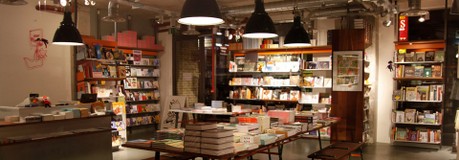 The bookshop known as Gosh Comics, at number 1, Berwick Street, Soho, near Tottenham Court Road tube station, gets its name from the exclamation often seen in comic strips, especially when the main character is dealt a moral blow. The shop is addressed to comic book and caricature fans and one can find all the latest issues, as well as rare pearls for collectors.
The bookshop known as Gosh Comics, at number 1, Berwick Street, Soho, near Tottenham Court Road tube station, gets its name from the exclamation often seen in comic strips, especially when the main character is dealt a moral blow. The shop is addressed to comic book and caricature fans and one can find all the latest issues, as well as rare pearls for collectors. The name of the High Stakes bookshop also leaves no place for doubt, with regards to the nature of the books on offer. The shop is clearly oriented towards gamblers. Hundreds of books are to be found here, all concerning topics such as the science of gambling, tips on how to play blackjack, baccarat, backgammon, or strategies on how to improve one's emotional control and self-confidence.
The most dogged of players, who also wish to become winners, may find all there is to learn about casinos, horse racing, greyhounds, roulette, risk management, and how to reap the greatest profit from the game.
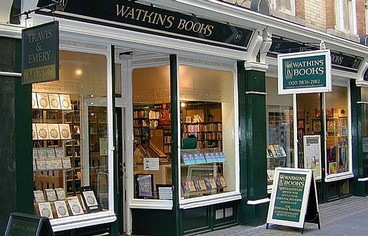 The Swedenborg House at 20, Bloomsbury Way is the headquarters for a publishing firm, but exhibitions, conferences, and films are also held here, and are all connected to the homonymous "jack of all trades": a philosopher, scientist, inventor, astronomer, mathematician, spiritual guide, visionary, and who knows what else! Swedenborg continues to have many followers, not only in England, but also all over Europe and in the United States, all of which pay tribute to him with steadfast worship. The conference hall, bright and rich with plaster decorations and adornments, is quite splendid. Also the library, which is completely white, is quite enchanting.
The Swedenborg House at 20, Bloomsbury Way is the headquarters for a publishing firm, but exhibitions, conferences, and films are also held here, and are all connected to the homonymous "jack of all trades": a philosopher, scientist, inventor, astronomer, mathematician, spiritual guide, visionary, and who knows what else! Swedenborg continues to have many followers, not only in England, but also all over Europe and in the United States, all of which pay tribute to him with steadfast worship. The conference hall, bright and rich with plaster decorations and adornments, is quite splendid. Also the library, which is completely white, is quite enchanting. In the esoteric bookshop called Watkins at 19-21, Cecil Court, there are new, second-hand, and downright ancient books, all on the subjects of magic, the occult, and hermetic arts, such as alchemy and theosophy. The catalogue is unendingly huge.
